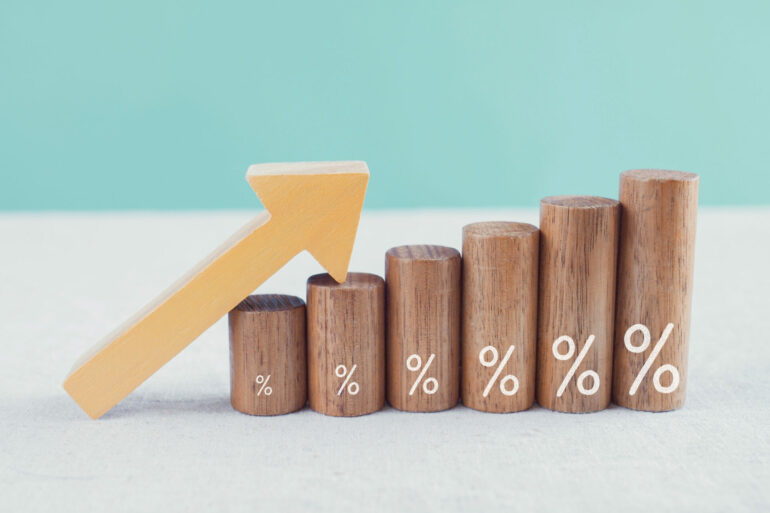Mortgage rates have started climbing again, with Moneyfacts analysis revealing that the average mortgage rate has risen from 5.00% to 5.01%.
The average 2-year fixed rate moved up from 4.96% to 4.98%, while the average 5-year fixed rate increased from 4.99% to 5.01%.
Lenders including NatWest, Royal Bank of Scotland and NatWest Intermediaries Solutions raised some fixed rates by up to 0.20%.
Santander went up by 0.11%, Gen H by 0.15%, Vernon Building Society by 0.15% and Hodge by 0.20%.
Although the base rate was cut from 4.25% to 4.00% on 7th August, 2-year swap rates increased from 3.655% to 3.752% and 5-year swap rates from 3.707% to 3.827%.
Adam French, head of news at Moneyfacts, said: “The Bank of England Base Rate may grab headlines, but there are many more rates and indices that influence the cost of borrowing.
“For starters banks compete with one another for customers and appearing at the top of the best buy charts is a great way of doing that, but once commercial targets have been reached, they may pull back for a time.
“Another major influence on the cost of fixed rate mortgages – which make up around 96% of all new mortgage approvals in the UK, according to the Bank of England, is the rates banks charge one another to lend money, known as swap rates.”
French added: “The Bank of England’s Monetary Policy Committee meet eight times a year to set the base rate, however, an estimated half a million changes to the swap rate take place over the same period.
“This market is valued at £350 trillion, and rates can change every second – sometimes multiple times per second.
“And it is this market that heavily influences how banks and building societies price their fixed rate mortgage products.”
He said: “What influences swap rates can be quite broad. For example, the two-year swap rate fell from 4.00% to 3.78% in response to the economic shock of President Trump’s ‘liberation day’ tariffs, and the average two-year fixed rate mortgage followed, dropping from 5.33% to 5.29% within days.
“Whereas swap rates rose in response to the latest base rate cut as inflation forecasts increased. It’s this volatility that means mortgage rates can rise even after the base rate falls.
“Looking to the end of the year borrowers can still expect mortgage costs to continue slowly sliding, but there may be occasional blips as wider economic data has an ever-greater effect on the rates lenders set.”



